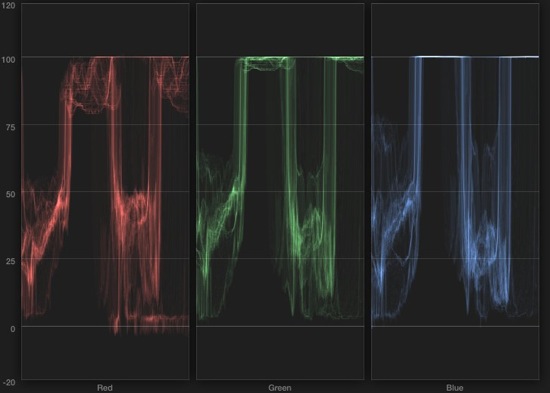Posts from August 2012
Structure
A client of mine sent a rough-cut through for comment last night. It’s great, so while I sent copious notes in timecode detail, that’s all fiddling around the margins. They’ve got the hard bits right already.
More useful, then, is lessons to draw from this film to guide the next one. What I wrote applies rather generally:
How does it open? Start on action, clear statement of intent, etc. Usually, the first page of a script can be thrown away — come to the action late, and all that.
Where’s the story? Not just what is it, but when is it? Knowing where the bulk of it comes allows you to introduce terminology and context early, which smooths the whole film.
Know how you finish. This applies for each shot as well as for the film overall. What’s the end-point?
As ever: grab attention, sustain it, reward it, and close gracefully.
For short factual films, just about everything else flows from that arc.
(RGB) Parade’s End
Tom Stoppard’s adaptation for the BBC of Ford Madox Ford’s Parade’s End is gathering rave reviews left, right, and centre. Between Cumberbatch’s mumbling, the intercut timelines, and not quite understanding who everyone was in the breakfast scene I’ll confess I found myself somewhat adrift.
However, this cheered me up:


If the BBC can get away with blowing their highlights that badly, I feel a damned sight better about some of my own wayward exposures. The yellowish roll-off makes this looks like it came from a badly-setup AF100, too, which is either an odd production choice or a really odd grading choice.
Storytelling through Composition
Shane Hurlbut (whose surname is, I believe, ‘ASC’) has a nice post about Storytelling through Composition:
I wanted my framing to be like a teenager: off, unpredictable, not perfect, still finding themselves. It was fun to be unconventional with our coverage.
(Via Hurlbut Visuals)
I’m a big fan of the offbeat framings he shows from Crazy/Beautiful. Desperately hard to pull off, there must have been many leaps of faith taken on set.
FCPX audio workflow
Now you’re all set to start cutting with the confidence that your clips will sound great from the moment they land in your timeline.
Film-maker Dan McComb has been writing some excellent FCPX tutorials of late, and I particularly liked this piece on audio processing and synchronization for interviews. I don’t go to quite these sorts of lengths myself — in part because I tend not to shoot interviews — but it’s reassuring to know that my overall workflow and tool use is similar. Two notes in particular:
Firstly, Dan advocates cleaning up audio during ingest and edit prep, rather than going back later. I’d absolutely endorse that sort of thinking when working with FCPX. With previous NLEs I’d lock picture and then go through a grade and dub process, but with FCPX I’ll usually do basic corrections prior to cutting and let them ripple down through the edit process.
The result is a much more watchable edit at all stages, and that often leads to smoother client viewings when one’s working with inexperienced clients. One of the reasons I like FCPX is that it imposes essentially no penalty for working this way.
Secondly, I’d only vaguely heard of isotope RX, and wasn’t aware that it worked within FCPX. Useful.
Aspect ratios
Great post by Ming Thein on Aspect ratios and compositional theory:
Most people will stick to the aspect ratio that is native to the camera, and either do nothing else, or crop to fit later. This is compositionally very, very sloppy – not only do you not get the best frame for the shape of your subject, there’s a very good chance that you probably won’t be able to fill the frame properly, either; 3:2 is a bit of a compromise aspect ratio that lacks the organic intimacy of 5:4 or 4:3 for portraits, or the drama of 16:9 for more expansive scenes.
I’m no Thein, but right now I’m rather enjoying fiddling/cursing/tweaking/fuzting about with a cheap toy lens on my GF1:
I seem to be cropping wider than 16x9 at the moment. Perhaps I’ll work out why if I shoot a whole lot more.

